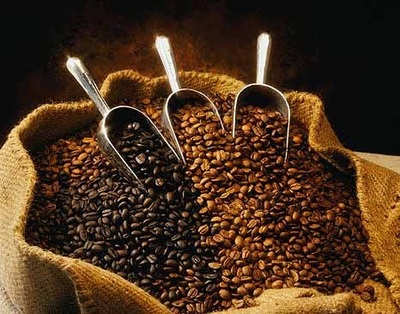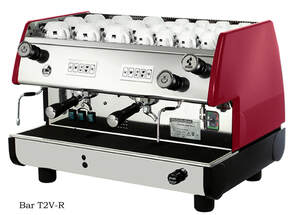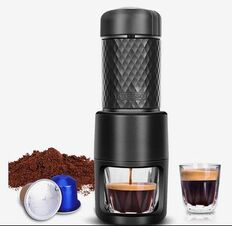Roasting, Grinding and Brewing
Once the green beans are harvested and processed, the next step in the long journey to making an excellent cup of coffee is roasting. This is done in large volumes by commercial roasters, smaller volumes by store roasters, and also becoming popular with the home roaster in quantities ranging from ounces to a few pounds. Although green beans may be stored for months, roasted beans should only be stored for a few days after roasting and thus best if used right away. Freshness degrades after roasting as the bean is oily and will go rancid if kept too long. Roasting can be as much an art as it is fun. The same green bean can take on very different characteristics depending on the roast profile from a light to a dark roast and also influenced by the equipment used. Roasting can be primitive as done in a cast iron pan over a flame or using as sophisticated computer controlled gas or electrically heated roaster.
Grinding follows the roast and again can be done at the commercial scale or at home to maintain the optimum flavor. The type of grind or coarseness will depend on the type of brewer used including drip (Chemex), espresso, vacuum (siphon), and press (French press), Moka, and percolated. Also becoming popular is cold brewing which does not expose the coffee to higher temperature resulting in a less acidic brewed coffee.
Grinding follows the roast and again can be done at the commercial scale or at home to maintain the optimum flavor. The type of grind or coarseness will depend on the type of brewer used including drip (Chemex), espresso, vacuum (siphon), and press (French press), Moka, and percolated. Also becoming popular is cold brewing which does not expose the coffee to higher temperature resulting in a less acidic brewed coffee.
Roasting
Roasting transforms green coffee into the aromatic brown beans. When the beans reach an internal temperature of about 400 degrees, they begin to turn brown and the caffeol, or oil, locked inside the beans begins to emerge. This process, called pyrolysis is at the heart of roasting. It is what produces the flavor and aroma of the coffee we drink.

Roast profiles range from light roasts such as "city" to much darker almost black roasts called Italian (espresso roasts). The same green bean will taste significantly different when roasted to these varied profiles as sugars caramelize and oils emerge to change the flavor profile.
Coffee cupping is the practice of smelling and tasting brewed coffee by slurping coffee from a spoon and aerating it as it sprays over the taster's tongue. This method allows the taster to note the flavors and aromas of the brewed coffee. Professionals are called "Master Tasters". The coffee taster measures the body (the texture or mouthfeel, such as oiliness), sweetness (the perceived sweetness at the sides of the tongue), acidity (a sharp and tangy feeling at the tip of the tongue), flavor (the characters in the cup), and aftertaste. These profiles varied significantly by the coffee's origin region and roast.
Coffee cupping is the practice of smelling and tasting brewed coffee by slurping coffee from a spoon and aerating it as it sprays over the taster's tongue. This method allows the taster to note the flavors and aromas of the brewed coffee. Professionals are called "Master Tasters". The coffee taster measures the body (the texture or mouthfeel, such as oiliness), sweetness (the perceived sweetness at the sides of the tongue), acidity (a sharp and tangy feeling at the tip of the tongue), flavor (the characters in the cup), and aftertaste. These profiles varied significantly by the coffee's origin region and roast.
Roasted Coffee Degrees and Profiles
Typical Roasting Profile
Types of Roasters
Commercial Roaster
Home Roaster
Types of Grinders
Electric Burr Grinder
Manual Mill Grinder
Types of Brewers
Commercial Multi-Station Espresso Maker
Home Espresso Maker (20 bar)
Stove Top Espresso Pot
Coffee Press
Vacuum Siphon Brewer
Chemex Coffee Maker















